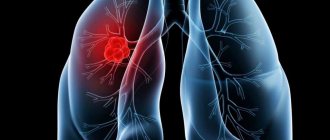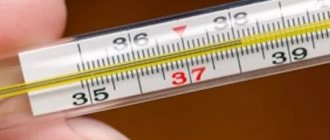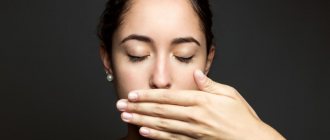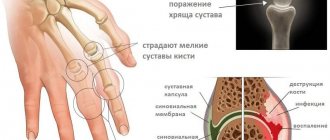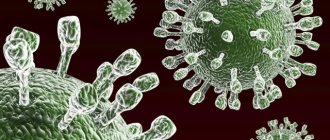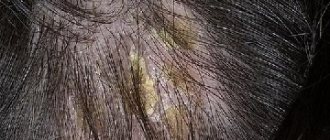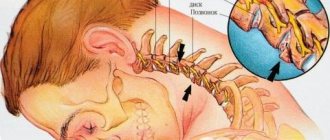Without any doubt, and this has been proven by practical medicine, inhalation for the treatment of cough is the most gentle and safe, and most importantly, an effective method of treating inflammatory colds of the upper respiratory tract, which allows you to very quickly alleviate the patient’s condition. We always try to cure a cold with the help of pills, potions and injections, without thinking about the fact that they all have side effects and effects. Drug therapy is very effective and, at the same time, unsafe. If there are no complications, then it will always be more correct to start treating the disease with traditional methods, in particular, with the help of inhalations.
Inhalation is a very ancient method that was used to treat allergic and inflammatory diseases of the respiratory system. At the first signs of the disease, the use of therapeutic inhalations can significantly shorten the painful period, facilitate sputum production, soften the pathological process, reduce the severity of cough and quickly approach full recovery.
Why are inhalations needed during a cough?
The term “inhalation” comes from the Italian word ihalo, which means “inhale.” This procedure can have a therapeutic or prophylactic effect, because inhalation does not require inhalation of medicinal substances. Remember what a positive and beneficial effect inhaling sea air or the healing aroma of a coniferous forest has on the body. This is a real natural or natural inhalation.
Colds that are accompanied by a dry hacking cough or, conversely, difficult to separate sputum, have different approaches to treatment. But the use of inhalations is almost always indicated, which can be carried out using old “old-fashioned” methods or using a modern inhalation device - a nebulizer. The method of inhalation for cough in both cases has common features, because it involves irrigation of the mucous membrane of the upper respiratory tract while the patient inhales vapors containing medications or medicinal extracts of medicinal herbs.
Medicinal solutions are inhaled in a vapor state and immediately act on the inflamed mucous membranes of the respiratory tract, covering very large areas, from the larynx to the surface of the bronchioles. At the same time, some medications can penetrate into the circulatory system; this method has shown much greater effectiveness than oral administration of drugs using conventional potions, tinctures and tablets for the treatment of diseases of the respiratory system.
>>We recommend: if you are interested in effective methods of getting rid of chronic runny nose, pharyngitis, tonsillitis, bronchitis and persistent colds, then be sure to check out this page of the site after reading this article. The information is based on the author’s personal experience and has helped many people, we hope it will help you too. Now let's return to the article.<<
Advantages of the inhalation method of treatment
Inhalations are prescribed for various diseases accompanied by cough. These are acute infections of the upper respiratory tract, laryngitis, tracheitis, bronchitis, pneumonia, bronchial asthma and even pulmonary tuberculosis.
The pathological process in diseases of the respiratory tract is localized mainly on the mucous membranes, where viruses and bacteria multiply.
In response to the introduction of infection, the mucous membrane responds with swelling and excess mucus production, which is manifested by a cough. Muscle spasm in the walls of the bronchi during obstructive diseases is another mechanism for the occurrence of cough.
Therefore, it seems natural that the effect of drugs directly on the mucous membrane of the respiratory tract in these diseases will be much more effective than the administration of the same drugs by injection or tablets.
Suffice it to remember that the use of modern inhalation agents has made a real revolution in the treatment of diseases such as bronchial asthma. Patients with this diagnosis, using medications by inhalation, live a normal life without any restrictions and have long forgotten about daily attacks, ambulance calls and systemic administration of hormones with their irreversible side effects.
Drugs inhaled in the form of vapors or aerosols act locally, relieving swelling and irritation, moisturizing the mucous membrane, cleansing it, thinning mucus, helping to quickly remove it from the bronchi and thereby reducing treatment time. Inhaled drugs are absorbed into the general bloodstream in much smaller quantities than with traditional administration, so the risk of side effects is minimized.
For this reason, inhalation treatment is gaining increasing popularity, especially since convenient home inhalers similar to stationary ones have appeared.
What types of inhalations are used for coughs during a cold?
Inhalations can be divided into two types - natural and artificial.
The natural way is to inhale clean air filled with phytoncides, microelements and many other beneficial substances that are contained in the clean air of mountains, sea coasts, coniferous and deciduous forests. This type of inhalation is more therapeutic and prophylactic, because it has a mild effect on the mucous membranes of the respiratory system, increases the overall tone of the body and immunity, helps fight chronic respiratory diseases, and has general strengthening properties. The second type involves the use of inhalation drugs for coughs and specialized devices for inhalation administration of them into the upper respiratory tract. The artificial inhalation method can be used not only in physiotherapy rooms of clinics, but also in ordinary home conditions.
Several inhalation methods are used to treat inflammatory diseases of the upper respiratory tract. At home, steam inhalation is considered the simplest method. To do this, it is enough to add a medicine to boiling water, which, together with steam microparticles, enters the throat, larynx, trachea, etc.
Inhalations using oily solutions - essential oils - are often used. There is a method of dry inhalation, during which the medicine is initially dissolved in water, and then the resulting inhalation solution is mixed with heated dry air. When such vapors are inhaled, the water evaporates quite quickly, so only particles of the dry drug enter the lungs. The third method is wet vapor inhalation, which is formed when the medicinal solution is converted into an aerosol, which is very similar to fog.
There is another type of therapeutic inhalation - aeroionoinhalation or aeroionotherapy, when positively or negatively charged air particles - water or air ions - are introduced into the body. The greatest positive effect from a medical point of view will come from inhaling negatively charged ions.
When treating cough in children, ultrasound inhalation is often used, which has a number of advantages. This technique is based on the “crushing” of medicinal inhalation solutions with ultrasound for further delivery of the smallest particles into the respiratory system. Such aerosols penetrate very deeply, but for this it is necessary to use special ultrasonic inhalers.
Depending on the temperature of the healing solutions used for inhalation treatment of cough, the following types are distinguished:
- wet - up to 30°C;
- warm-humid - up to 40°C;
- steam - up to 45°C.
We will talk in more detail in this article about the use of inhalation for coughs in children and adults, how to use inhalations and what medications to use for this, depending on whether there is sputum production or not.
What types of inhalations are there?
Depending on the state of aggregation of the inhaled substance, inhalations can be divided into:
- Steam. Inhalation is carried out by inhaling vapors of solutions of medicinal components. Basically, steam inhalations are carried out with infusions of medicinal herbs, solutions of soda, salt, and essential oils. To do this, the solution must be heated.
Aerosol inhalation
- Aerosol. The solution of the active substance enters the respiratory tract in the form of small droplets (mist). To convert the solution into an aerosol, special devices are used - nebulizers.
- Powder. The medicine is inhaled in the form of a finely ground powder. For these purposes, devices are used - turbhalers; they are used mainly for the treatment of bronchial asthma.
Inhalations are classified according to temperature:
- Cold (temperature of the inhaled substance up to 30°).
- Heat-moist (temperature 30-45°).
- Steam (temperature 45-50°).
Video: how to choose an inhaler - Dr. Komarovsky
Contraindications
Almost all diseases of the respiratory system are accompanied by a cough - dry or wet. Cough is a protective reaction of the body aimed at removing foreign objects and large amounts of infected sputum from the lungs and bronchi. Although very often the cough takes on an annoying, dry character. In this case, it does not have a protective function, but is simply a consequence of irritation of the inflamed mucous membranes. Due to the fact that cough is one of the main symptoms of respiratory diseases, and treating cough with inhalation is a fairly popular method, let’s first figure out which diseases can be treated and which cannot using this effective method.
Under no circumstances should you resort to a therapeutic inhalation treatment method if the patient has:
- increased body temperature more than 37.5° C;
- nosebleeds, hemoptysis and tendency to bleed in general;
- individual intolerance and allergy to the medicinal substance used in the inhalation solution for the treatment of cough;
- severe diseases of the cardiovascular system - heart failure and stage III hypertension, conditions during and after myocardial infarction and cerebral stroke, cerebral atherosclerosis with cerebrovascular accidents;
- severe diseases of the respiratory system - respiratory failure of the third degree, bullous emphysema, giant cavities, recurrent spontaneous pneumothorax.
Before carrying out inhalations, it is better to consult your doctor to clarify whether there are any contraindications for the use of inhalation treatment for dry and wet cough in each individual case.
In all other cases, the inhalation method is indicated for the treatment of respiratory diseases. Inhalations are indicated for coughs and for pregnant women; it is only necessary to use medications that are not prohibited for treatment during intrauterine development of the fetus. In addition to colds and inflammatory diseases of the upper and lower respiratory system, inhalations for allergic coughs, which are considered the main method of administering a medication, are popular and extremely effective.
As mentioned above, inhalations are also used in children, but the age limit is the limitation. It is recommended to use the inhalation method for children over 2 years of age, when the child is able to understand his actions and follow parental instructions.
Medicines for inhalation with a nebulizer
The following medications can be used to prepare nebulizer solutions:
- antitussives (Tussamag, Lidocaine) - for dry paroxysmal cough
- mucolytics (Fluimucil, ACC, Ambrobene, Ambroxol, Lazolvan, Pectusin, Sinupret) - to thin and remove mucus
- bronchodilator and (Berodual, Berotek, Atrovent, Ventolin) - to relieve asthma attacks in obstructive respiratory diseases
- antibiotics (Dioxidin, Ceftriaxone) - to eliminate bacterial infection
- antiseptics (Miramistin, Furacilin, Chlorophyllipt) - for the treatment of rhinitis, tonsillitis, ARVI
- immunomodulators (Derinat, Interferon) - for acute colds
- glucocorticosteroids, hormonal drugs (Dexamethasone, Pulmicort, Cromohexal) - to relieve asthma attacks
- vasoconstrictors (Naphthyzin, Oxymetazoline, Naphazoline) - to eliminate the feeling of stuffiness in the nose
A wide variety of drugs can be used for inhalation with a nebulizer.
What kind of cough should be treated with inhalations?
Listed above are diseases and conditions for which inhalation treatment is strictly contraindicated. Now let’s look at the list of diseases and the principles for which coughs are inhaled. Of course, first of all, this group of diseases includes acute respiratory diseases, chronic inflammatory pathologies of the respiratory tract, for example, bronchitis, chronic pharyngitis, bronchial asthma, sinusitis, etc.
Most often, inhalations are used for dry cough during acute laryngitis, which occurs against the background of ARVI and hypothermia and is accompanied by damage to the vocal cords, sore throat and dry hacking cough. In these cases, warm inhalation solutions are used, which should relieve swelling of the vocal cords and possible laryngeal stenosis with acute development of respiratory failure.
Acute tracheitis, acute laryngotracheitis, acute bronchitis, acute obstructive bronchitis, which are accompanied by both dry and wet cough, respond well to inhalation treatment. In the treatment of such diseases using inhalation in the presence of a wet cough, one strives to liquefy thick, difficult to separate sputum to facilitate its removal from the bronchi, reduce the inflammatory process and swelling in the mucous membrane in order to alleviate and relieve the severity of a severe debilitating cough.
The inhalation method has proven to be excellent for the treatment of acute and chronic ENT diseases - rhinitis, tonsillitis, sinusitis, for example, frontal sinusitis and sinusitis. In such cases, inhalation of inhaled drugs through the nose is sometimes indicated to relieve swelling of the mucous membrane of the upper respiratory tract.
An indispensable method of administering drugs for inhalation for coughs of an allergic nature, for asthmatic bronchitis and bronchial asthma, to eliminate bronchospasm, expand the lumen of bronchioles and eliminate the allergic component in the pathological process. Inhalations for allergic cough are considered one of the main methods of treating such diseases.
Such a terrible disease as pneumonia is almost 100% accompanied by a severe cough with the release of a large amount of mucopurulent sputum and increasing swelling of the lower respiratory tract. When the body temperature is less than 37.5 ° C, inhalations are indicated to relieve a wet cough with the introduction of anti-inflammatory drugs, antibiotics, antiseptics, enzymes, and herbal decoctions into the respiratory system. When the inhalation technique is carried out correctly, a strong cough subsides quite quickly, swelling is relieved and expectoration of sputum is facilitated.
Inhalations are indicated for wet coughs that occur during pulmonary syndrome of cystic fibrosis and against the background of fungal diseases of the respiratory tract.
In addition, inhalations are used to eliminate and relieve cough in tuberculosis, for the treatment and prevention of cardiovascular diseases, in particular, coronary artery disease, hypertension, during the rehabilitation period after a myocardial infarction. The procedure is also used to treat diseases of the nervous, endocrine and other systems, and if benefits from aromatherapy are expected, then to improve the mental state, blood and lymph circulation.
Main causes of cough
Cough accompanies almost all diseases of the upper and lower respiratory tract. Coughing is an unconditioned reflex that is caused by irritation of the respiratory tract receptors. This reflex is protective and is aimed at cleansing the bronchial tree, trachea and pharynx.
Cough is a symptom, not a disease. In different cases it has different reasons. So, in the first days of an acute respiratory disease, inflammation and swelling of the mucous membrane of the pharynx and trachea occurs, which causes irritation of the cough receptors. There is no sputum yet, the cough at this time is dry, obsessive, debilitating. After a few days, mucus production increases, the cough becomes productive, phlegm is cleared, the airways clear, and within 7-10 days the patient recovers. This pathogenesis of cough is characteristic of acute respiratory infections, acute pharyngitis, acute tracheitis, and acute catarrhal bronchitis.
In acute laryngitis, cough is caused by irritation of reflex zones located in the larynx. The cough with laryngitis is also dry, obsessive, and does not bring relief. As a rule, there is no sputum with such a cough.
With a complicated course of these diseases, the addition of a bacterial infection, the spread of inflammation to the lower parts of the bronchial tree, the cough prolongs, since sputum accumulates in the lumen of the bronchi, sometimes of a purulent nature, and the removal of this sputum is difficult. Cough caused by prolonged irritation from accumulating sputum is characteristic of bronchitis, pneumonia, pulmonary tuberculosis, acute and chronic sinusitis (flow of mucus from the paranasal sinuses into the pharynx).
Cough can be caused by inhalation of irritants and dust. Allergies are also a fairly common cause of cough.
Other, more rare causes of cough: gastroesophageal reflux, foreign bodies, tumors, compression of the respiratory tract, heart failure, side effects of certain medications, neuroses.
As you can see, the causes of cough are different, and approaches to its treatment should also be different. The main advice is to consult a doctor, find out the cause of the cough and apply the prescribed treatment, including civilized inhalation therapy.
Methods of inhalation to treat cough
We examined the questions of what kind of cough inhalations are used for and for what diseases this method is indicated and contraindicated. And if there is a need to use this method, then it’s time to study it in more detail and understand how to do inhalations.
Of course, it is much easier and more effective to inhale a cough with a nebulizer or another type of modern inhaler, but what if you don’t have one at hand? This problem can be solved quite simply. You can pour a hot solution for inhalation treatment of cough into a teapot or teapot, close it and inhale the resulting vapors with the remedy through the spout. If the steam is very hot and there is a risk of getting burned, then you can make an improvised cone out of cardboard or thick paper, insert the tip into the spout of the kettle and breathe through this tube.
Useful information: Tonsilotren - instructions, application features, real possibilities. Comparison with Tonsilgon
Some people manage to perform steam inhalations to get rid of coughs by bending over an open pan with a medicinal solution and covering themselves with a thick terry towel. This method has a right to exist, but it is dangerous because you can burn the skin of the face and neck, and worst of all, the mucous membrane of the upper respiratory tract with hot healing fumes. Therefore, during the procedure, you should not take very deep breaths from the very beginning.
By the way, a hot healing solution does not mean boiling water! And in general, forget about experiments with a boiling solution before inhalation! The maximum temperature of the liquid for the hottest method of cough treatment, steam inhalation, should not exceed 52-57 ° C.
And the steam temperature during therapeutic inhalation for a dry cough for a child of the younger age group should not exceed 30°C. For older children aged about 3-4 years, you can increase the aerosol temperature to 40°C. And the younger the child, the longer the cardboard cone needs to be made to avoid throat burns.
To prevent accidental absorption of the hot inhalation solution into the respiratory tract during coughing, ensure that the cardboard cone does not come into contact with the surface of the healing liquid. Usually, the time of using a warm medicinal solution for the inhalation procedure is always enough so that its temperature does not drop. But if necessary, if it is impossible to warm up the contents of a home inhaler, you can simply add hot water with the required dose of medicine.
Steam inhalation at home
To carry out such inhalations at home, you can purchase an inexpensive steam inhaler, but you can also make do with improvised means. The most acceptable method of steam inhalation: a decoction of medicinal herbs or solutions of table salt, soda, essential oils is poured into a teapot, a cone made of paper and cardboard is placed on the spout, and we breathe through the narrow end of the cone. Under no circumstances should the solution be hot. Let's forget about boiling water! The maximum solution temperature is 55°.
Infusions of herbs are used: chamomile, sage, calendula, eucalyptus, raspberry, mint, wild rosemary. There are many recipes for herbal inhalations. Herbal inhalations have an anti-inflammatory, antiseptic effect and can be used for both dry and wet coughs.
You can add honey, essential oil, and garlic juice to the herbal decoction. To soften the throat and improve mucus discharge, soda inhalations and inhalations with saline or mineral water are also used.
Here are some recipes for steam inhalations:
- Mineral water such as Narzan, Borjomi, Essentuki-17, heated to 50°.
- Salt solution (1 teaspoon of sea or table salt per 2 glasses of water).
- Inhalations with soda (1 teaspoon of baking soda per 1 glass of hot (but not boiling) water).
- Dissolve a tablespoon of honey in boiled water.
- Brew dry herb (one or a mixture) with a glass of boiling water, let it brew for about 20-30 minutes. If the infusion has cooled, dilute with boiling water and breathe.
- Add 10-15 drops of essential oil (eucalyptus, fir, peppermint, pine oil) or a piece the size of a match head of “Star” balm to the herbal infusion. If you don’t have either one or the other at hand, you can throw a validol tablet into the solution.
What do you need to remember about steam inhalation?
- With their help it is unlikely to achieve a pronounced therapeutic effect. This is rather a distracting procedure that brings temporary relief from a debilitating cough.
- The particles of the substance that enter the body during steam inhalation are quite large, they cannot enter the lower respiratory tract, so their main use is for diseases of the nasopharynx and larynx.
- The duration of steam inhalation is 10-15 minutes, the frequency is 3-4 times a day.
- Use herbal decoctions, honey and essential oils with caution in people prone to allergies.
- It is not advisable to give steam inhalations to small children, since it is impossible to accurately control the temperature of the steam.
- During such inhalations, medications cannot be used, since most of them are destroyed when heated.
Types of modern inhalers
If you or your child very often suffer from colds, which are accompanied by a long and painful cough, it would be a good idea to purchase a modern inhaler in advance, which will always be at hand in order to administer life-saving inhalation in time for a child with a dry or wet cough.
What are the advantages of using an inhaler, and that it helps to deliver therapeutic inhalation agents as far as possible and more effectively to the affected mucous membranes of the respiratory system, facilitates the procedure itself, and can be used not only at home, because you can always keep it at hand.
Inhalers are divided into three main types:
- A steam inhaler has recently been used very rarely, because many medicines should not be heated to a very high temperature, at which they disintegrate, decompose, and lose their therapeutic effect. But, for example, to treat a cough using inhalations with soda, a steam inhaler is perfect. By the way, using modern steam inhalers, the possibility of burns is excluded, because they have a button for adjusting the steam temperature. In addition, this device is very convenient to use for cosmetic and therapeutic procedures for the skin of the face and neck, the so-called steam bath. These inhalers are best used for aromatherapy.
- An ultrasonic nebulizer is quite expensive. Its use is limited to the use of those drugs that are destroyed by ultrasound. These can include many types of antibiotics and expectorants. At home, this inhaler is used extremely rarely for the above reasons. However, they are very compact, which allows you to always have them on hand.
- The most popular, effective and convenient is the compressor inhaler, which is also called a nebulizer. It can be used literally from the moment of birth for newborns without any restrictions. Inhalation procedures for coughing with a nebulizer can be done both at home and in mobile settings. The medicinal aerosol in nebulizers is created using discharged pressure, and it is activated by inhalation. The higher the inhalation rate, the greater the release rate of this aerosol. Such inhalations are indispensable for allergic coughs and for relieving attacks of bronchial asthma. The advantage of this inhaler is its ability to create aerosols with tiny particles of medicinal liquid that reach the deepest parts of the lungs. Inhalation for children with a nebulizer when coughing is the most convenient and effective.
We recommend that you read the article “Inhalers - which one to choose and how to use correctly?” — very educational informative material about nebulizer inhalers.
Types of nebulizers
Compressor nebulizers
form an aerosol due to compressed air supplied into the chamber with the medicine under pressure. Any medications can be used with them. A compressor inhaler for coughs and runny nose will also cure various respiratory diseases, but inhalations can only be carried out at home, since these devices operate on mains power and take up quite a lot of space. Compressor nebulizers can be used with any medications.
Ultrasonic nebulizers
create an aerosol by vibration of a piezoelectric element on the surface of the solution. They are compact and silent, so they are convenient to take with you, and it is easy for small children to inhale with them. But they have a significant drawback - the inability to use antibiotics, hormones, mucolytics and other drugs that are destroyed when heated. Using an ultrasonic inhaler, you can inhale saline solution, mineral water, and medicines based on plant extracts.
Mesh inhalers
form an aerosol by sifting the medicine through a fine mesh membrane (mesh in English - mesh). Such nebulizers are well suited for allergy sufferers and asthmatics. With them you can use all medications and carry out inhalations anywhere - they are compact and run on batteries. The tilt does not affect the operation of the mesh inhaler, so it is convenient to inhale while lying down; this is suitable for infants and bedridden patients. They have one drawback - high price.
What is a nebulizer: advantages and methods of use
The name of this device comes from the Latin word “nebula”, which translates as cloud or fog.
The nebulizer inhalation device, under the influence of compressed air, transforms the liquid medium into a healing aerosol, which can then be easily delivered during the procedure to the farthest parts of the respiratory system. A nebulizer is used for dry or wet cough caused by acute and chronic inflammatory diseases, including those of a bacterial nature, of the respiratory system, as well as for the emergency relief of attacks of bronchial asthma. Nebulizers can be portable to serve only one patient or stationary, which are used to treat several people simultaneously. But they all have the same principle of operation, which is based on the spraying of a medicinal solution of the drug, converted by a compressor into an aerosol cloud. A powerful stream of air passes through a small hole in the nebulizer container, which contains the treatment solution. And then the aerosol cloud is fed through a tube or mask into the upper and lower respiratory tract.
The aerosol particles are so small that they easily penetrate into the farthest parts of the lungs. However, depending on the size of the aerosol microparticles, they may not overcome a certain boundary and reach the farthest depths of the respiratory system:
- particles larger than 10 microns reach the oropharynx;
- particles of 5-10 microns in size settle in the area from the oropharynx to the trachea;
- aerosol particles of 2-5 microns in size reach the lower respiratory tract;
- particles of 0.5-2 microns reach the alveoli.
A nebulizer consists of a chamber shaped like a plastic cup with a volume of 5 to 10 ml, into which a medication solution is poured. This container has a special valve with two outlets. One of them leads through a tube to the device itself, the other is the output one, for supplying a medicinal aerosol into the body of a sick person. A tube or mask is connected to the second hole, from which an aerosol is supplied in the form of fog. If the aerosol has large particles, the compressor is malfunctioning, and inhalation with a nebulizer for a wet cough will be ineffective because it will not penetrate to the desired depth.
By the way, depending on the type of nebulizer, the aerosol can enter the respiratory tract in different ways, having some features:
- constant supply of an inhalation solution when coughing with a nebulizer in case the supply of aerosol is adjusted during inhalation and exhalation, which leads to loss of the drug and a decrease in the use of a given dose;
- the process of supplying an aerosol during inhalation and exhalation is regulated by the patient himself in order to save the drug, for which he constantly presses a special button (this method is not suitable for inhalation and treatment of cough in a child).
- automatic supply of aerosol during inhalation and turning it off during exhalation using a special valve system allows for an increase in the dose of medicinal mist during inhalation.
It should be remembered that there is almost always a residual volume of liquid of 1 ml left in the container, which cannot be used to create an aerosol.
The nebulizer has many advantages:
- greater work resource;
- no need to purchase consumables except medicines;
- compactness;
- possibility of spraying almost all types of medicines and mineral water;
- use for inhalation in children suffering from cough.
But there are also minor drawbacks - the noisy operation of large appliances. The ultrasonic type of nebulizer is not suitable for the treatment of bronchial asthma.
How to choose a good nebulizer
The choice of medical equipment depends on the prescribed medications and the patient's requirements. Compressor, ultrasonic and mesh nebulizers spray smaller particles than a steam inhaler and are used to treat the lower respiratory tract. Some models have a particle size control function and are used to treat both the upper and lower respiratory tract. Steam is convenient for treatment of flu, colds and acute respiratory infections for the upper respiratory tract.
For a child, the optimal choice would be a silent one or an option in the form of a toy, which will not scare, but will distract attention from the procedure itself. If you have bronchial asthma, preference is given to portable, battery-powered equipment.
To select a device, you need to consider the following questions:
- for the treatment of what disease it is purchased;
- for adults, children or the whole family;
- Is there a need to take it with me often?
Drugs that are not used in nebulizers
Although the range of drugs used for inhalation using a nebulizer is very wide, it is useful to know which drugs and products should not be used for this procedure:
- drugs that are not capable of providing a medicinal effect upon contact with the mucous membrane of the respiratory tract - Diphenhydramine, Papaverine, Eufillin;
- solutions containing essential oils, which are useful for treating the nose and nasopharynx, but not always for treating the lungs. They can cause damage to the nebulizer and the inability to rinse the “apply membrane”;
- herbal infusions, decoctions and tinctures due to the risk of overdose of active substances, clogging of the device passages with pieces of grass, roots and leaves;
- independently crushed solid drugs or syrups due to possible breakdown of the device and the inability to use many topical products.
Rules for effective inhalations
To get a quick effect, you must follow a number of rules:
- Compliance with the doctor’s instructions regarding the choice of drug and its dosage.
- The duration of the procedure must be determined by the doctor and observed by the patient.
- Equipment components (masks, mouthpiece, medicine container) are thoroughly washed and disinfected.
- Carry out the procedure no earlier than an hour after eating.
- After therapy, it is not recommended to eat, drink, or talk for an hour.
- Use medical equipment while sitting or standing.
- Use a fresh dose of medication each time.
- Use only sterile solutions.
- Do not talk during the procedure.
Drugs recommended for inhalation for cough using a nebulizer
Not only medications are recommended for use in the nebulizer, but also mineral water such as “Borjomi”, “Narzan”, “Essentuki” for alkaline inhalations for coughs.
In this case, before treating a cough and inhaling mineral water, it is necessary to warm it up, first releasing all the carbon dioxide bubbles. The most harmless and simplest are inhalations for coughing with saline solution. Medicines must be ready for use, so we list the main drugs that are used in inhalations:
- antiseptics and antibiotics – Gentamicin, Dioxidin, Tobramycin, Fluimucil, Furacilin;
- bronchodilators - Atrovent, Salbutamol, Berotek, Berodual, Magnesium Sulfate;
- hormonal agents - Pulmicort, Budesonide;
- immunomodulators - Dry leukocyte interferon;
- local anesthetics – lidocaine;
- mucolytics – Lazolvan, Pulmozyme, Fluimucil;
- membrane stabilizers – Cromohexal;
- herbal medicine – Rotokan;
- combination drugs – Fenoterol, Berodual;
- saline;
- mineral water.
All drugs can be used only after first consulting a doctor, according to his indications. You can independently use 0.9% saline solution or mineral water without any problems or restrictions. Inhalation of a dry cough with saline helps soften the inflammatory process, ease breathing and coughing, moisturize inflamed mucous membranes of the respiratory tract, and thin viscous sputum. In addition, inhalation procedures for coughing with saline solution have a mild disinfectant effect on the mucous membranes.
If several drugs are prescribed at once, then you should always start with bronchodilators, which dilate the bronchi, and only then, after 20 minutes, mucolytics are used, and then antibiotics. All solutions must be sterile, prepared using distilled water or saline. You cannot use boiled tap water for inhalation.
What medications are used for the nebulizer?
Various medicinal solutions can be used through a nebulizer for dry cough. These can be pharmaceutical preparations, pure herbal decoctions or alkaline mineral waters. The main thing is that in the solution that is intended for the procedure there are no particles or sediments that could penetrate the filter and bring the device out of tune. In the treatment of dry cough, you can use several groups of medications or regular inhalations with soda or saline.
Saline and alkaline solutions
A simple and safe way of inhalation for children and adults. The main purpose of this procedure is to moisturize the mucous membrane, soften the cough and thin the viscous mucus. The following can serve as medicinal raw materials:
- Borjomi.
- Narzan.
- Essentuki.
- Soda solution.
For one inhalation you will need 2–4 ml of solution, which is poured into the nebulizer container and inhaled for 5–10 minutes. The frequency of such inhalations can reach up to 5 times a day. They are completely safe, have no contraindications, and can be performed on young children and pregnant women.
Inhalations with saline solution
The second, safe and effective method for inhalation is the use of saline solution, which is popularly called sodium chloride solution or sodium chloride solution. In pharmacies you can buy a ready-made 9% sodium chloride solution. It can be used as an independent cough remedy, or as a solvent for solutions poured into a nebulizer.
We recommend reading - What are the indications and contraindications for inhalations with Lazolvan and saline?
Inhalations with saline solution are used as an antiseptic. They help moisturize the mucous membrane, have an antimicrobial effect, and reduce tissue swelling. Nebulizer therapy with saline solution can be used for dry or wet cough. Using this product on your own, 2–4 ml of a 9% solution per 1 procedure is sufficient. You need to breathe the steam until the container is completely empty. Cough inhalations with saline solution can be used for colds, as well as dry allergic cough. This procedure will help cleanse the bronchi from allergens and other particles of viruses and bacteria.
Bronchodilators
For dry cough with difficult to separate sputum and bronchial obstruction, drugs from the group of bronchodilators are often used. Such medications have the ability to relieve tissue swelling, expand the lumen of the bronchi, and accelerate the removal of sputum. Most often, bronchodilators are used for laryngitis, bronchitis with obstruction, bronchial asthma, and some types of pneumonia:
- Berodual.
- Berotek.
- Atrovent.
- Ventolin.
- Salbutamol.
- Nebutamol.
Nebulizer bronchodilators can be produced in the form of drops, solutions or nebulas. During inhalation, they must be diluted with 9% sodium chloride. The dose of the drug is determined individually for each patient. This group of drugs belongs to potent drugs, so they can only be used as prescribed by a doctor, strictly observing the recommended doses.
Mucolytics and expectorants
The most common group of drugs used for nebulizer therapy. Their use for dry coughs allows for a moderate anti-inflammatory effect, thins mucus, and accelerates its release. Mostly, such solutions contain ambroxol hydrochloride or another substance. Similar drugs are produced under different trade names in the form of a solution for inhalation:
- Lazolvan.
- Ambrobene.
- Fluimucil.
- ACC.
- Mukolwan.
You might be interested in the article - How to use Ambrobene for inhalation?
When using similar solutions for inhalation, they also need to be diluted with saline solution. The dosage of any drug, as well as the frequency of procedures, is prescribed by the doctor individually for each patient. To increase the effectiveness of the procedure, you need to increase the consumption of warm liquid before inhalation.
Antibiotics and antiseptics
If a dry cough is bacterial in nature, inhalations with antibacterial or antiseptic solutions will be beneficial. Such drugs have a rapid therapeutic effect and reduce the risk of complications. Inhalation for a dry cough in a child with the help of such drugs has a detrimental effect on bacteria and microbes that are present in the sputum or tissues of the respiratory system:
- Fluimucil antibiotic IT.
- Gentamicin.
- Miramistin.
- Dioxidine.
- Furacilin.
Drugs from this group should be used on the recommendation of a doctor and only strictly as prescribed. During the procedure, any medicine is diluted 1:1 with 9% sodium chloride.
We recommend reading an article about the advantages and disadvantages of using inhalations for the common cold with Dioxidin for children.
Inhalation mixtures
Inhalations through a nebulizer can also be carried out using “complex formulations”, which are prepared in pharmacies strictly according to a doctor’s prescription. This medicine may contain:
- Furacilin.
- Saline solution.
- Ascorbic acid.
- Adrenalin.
- Diphenhydramine.
Such prescriptions can only be prescribed by a doctor, clearly prescribing dosages for each patient. “Complex mixtures” for inhalation are used quite rarely, more often for respiratory diseases of bacterial origin. Such solutions may also contain other drugs, but the decision on the choice of drug is always made by a specialist.
Glucocorticoids
Drugs from the group of glucocorticosteroids are prescribed for a prolonged dry cough, chronic respiratory diseases or allergic diseases. The most common ones include:
- Pulmicort.
- Dexamethasone.
- Hydrocortisone.
About the drug Pulmicort for inhalation, instructions for use - read this article.
Drugs from this group are available in different pharmacological forms: ampoules, nebulas, drops. They have a pronounced anti-inflammatory effect and relieve attacks of dry cough.
Features of inhalation treatment for dry and wet cough
Many are faced with the choice of which drug to choose and which cough inhalations will be effective, depending on whether sputum is being released or a dry hacking cough is tormented.
One can imagine the condition of a patient who is overcome by a dry, unproductive cough. There is no sputum production, and coughing attacks deprive sleep and rest. With such a cough, the inflammatory process in the mucous membranes of the respiratory tract does not stop, against the background of which pathogenic microorganisms actively multiply. At the same time, they are not eliminated from the body, as a result of which the cells of the surface layer of the mucous membranes are destroyed, and only then does exudation begin with the release of tissue decay and inflammation products from the bronchi.
But until this process begins, it is necessary to carry out anti-inflammatory therapy and soften and even temporarily stop the dry cough. Using a nebulizer for dry coughs, lidocaine is inhaled, which has a local anesthetic effect and has a mild anti-inflammatory effect. To stimulate the formation of sputum, the mucolytic drug Ambroxol is indicated. Inhalation of saline solution for dry coughs or alkaline inhalations will help soften the inflammatory process in the mucous membranes. By type, inhalations should be moist with a low temperature of the aerosol, so as not to cause increased hyperemia of already inflamed mucous membranes.
If you use a steam inhaler, you can resort to oil inhalations, which have a protective effect by covering the mucous membranes with a thin layer of oil particles. Oil inhalations help soothe dry coughs, reduce swelling and irritation of the mucous membranes. At the same time, inhalations of antibiotics and antiseptics are prescribed.
If it is possible to cause a wet cough, then inhalations for a wet cough are started first with bronchodilators, for example, Atrovent or Magnesium Sulfate, then mucolytics are used - Lazolvan, and only then antiseptics and antibiotics are prescribed. The main thing is to create the opportunity for sputum to freely and easily exit the respiratory tract.
The effect of inhalation on the body
During inhalation the following clinical effects can be achieved:
- Moisturizes the mucous membrane, which relieves dry cough.
- Enveloping, creating a protective film when using essential oils. This effect helps to reduce the excitability of cough receptors.
- Stimulates the formation of sputum, thanks to this effect the cough becomes moist and passes faster.
- With viscous sputum, thin it and make it easier to pass.
- Relieving bronchospasm in allergic cough and obstructive bronchial diseases.
- Detrimental effect on infection when using antiseptics and antibiotics.
Medicines for an inhaler for a runny nose
Is a cold accompanied by severe swelling of the nasal mucosa? The Little Doctor inhaler will come to the rescue. For immediate relief of the patient's condition, you can use simple alkaline water. The soda contained in the liquid helps soften the mucous membrane and relieve swelling. Immediately after the procedure, you can breathe much easier.
The Chlorophyllipt product allows you to quickly restore your condition. This medicine is in the form of a solution that acts as an antiseptic. The drug helps destroy pathogenic microflora. It is recommended to use the medicine together with saline solution. This treatment will be especially effective for sinusitis.
For an infectious runny nose, you can also use Furacilin. This drug is also effective in killing bacteria, particularly staphylococci.
What is the secret of therapy?
The right medicine for the inhaler will already give a good result. But why use the device in this case? After all, the drug can simply be taken orally. The secret is in the vapors produced by the inhaler. When the medicine evaporates, it penetrates faster into the tissues and mucous membranes, and the healing process accelerates. The medicine directly affects the affected area - the mucous membrane of the throat or nose.
Many patients note that after using an inhaler for the nose or throat, relief comes much faster. If you use the device immediately after hypothermia, there is a chance to avoid a cold. Pathogenic microflora dies at an early stage.
What solutions can be used in a nebulizer?
The choice of medication for the inhaler depends on the nature of the disease and its course. For bronchitis you can use the following medications:
- Lazolvan with ambroxol hydrochloride;
- mineral water (Narzan, Borjomi);
- Chlorophyllipt with eucalyptus extract;
- Pulmicort based on budesonide.
For bacterial infections, procedures with Miramistin and Chlorhexidine are effective. In case of exacerbation of pharyngitis, a sore throat can be cured with Tonsilgon N, Malavit. For angina, Furacilin, Dioxidin, Chlorophyllipt are chosen for inhalation with a nebulizer. The doctor prescribes antibiotics individually.
Indications for use and contraindications
There are a number of indications for using the inhaler. Procedures are prescribed if a person has:
- acute respiratory infections;
- bronchitis;
- runny nose;
- sinusitis
- sore throat;
- pneumonia at the final stage of treatment;
- pulmonary tuberculosis;
- upper respiratory tract fungus
Do not use the nebulizer if your body temperature is elevated. If a person has arrhythmia or intolerance to any medication. Procedures are not prescribed for pathologies of the cardiovascular system:
- Heart attack;
- stroke;
- hypertension
- atherosclerosis;
- atherosclerosis
Doctors pay attention to the presence of diseases of the respiratory system. If at least one of these pathologies is observed, then treatment with a nebulizer is contraindicated.
If your throat hurts
It is first necessary to find out what causes the unpleasant symptom. Different treatments are selected for viral and bacterial infections. If your body temperature does not rise, you most likely have to deal with ARVI. In this case, it will be enough to use 2-3 ml of physiological solution and 1 ml of Chlorophyllipt (can be replaced with Furacilin). Using this recipe, it will be possible to disinfect the mucous membrane and relieve pain.
For severe inflammation or swelling of the mucous membranes, hormonal or antihistamines may be prescribed. However, you cannot carry out such treatment on your own. As a rule, the prescription is written by an otolaryngologist.
Recipes for inhalations
When choosing a medicinal composition, it is necessary to exclude allergies to its components. For specific diseases, different solutions are used. Soda and salt compositions relieve swelling and restore the patency of the upper respiratory tract. Such medications are effective for respiratory infections and allergic rhinitis. Simple recipes:
- Dilute 1 tbsp in 1 liter of hot water. l. sea salt. Stir until the crystals dissolve. Children under 3 years old need a less concentrated saline solution for inhalation.
- Dissolve 1 tbsp. l. soda in 1 tbsp. warm water or saline solution. Mix and use the resulting solution for inhalation.
Articles on the topic
- Inhaler for wet cough - method of use for children and adults
- Spiriva - instructions for use, release form, dosage and analogues
- Medicine for tracheitis for children - antibiotics, antibacterial agents and inhalations
Cough solutions
In case of an unpleasant symptom, medications with anti-inflammatory, bronchodilators, and mucolytics are prescribed. Cough inhalation solution has age restrictions. Effective products for inhalers:
- Saline solution, the procedures with which help with dry cough. For 1 inhalation, 4–5 ml of solution is required. Duration of therapy is up to 10 days.
- Fluimucil, ACC Injection for wet cough. For adolescents over 12 years of age and adults, the dose is 3 ml of concentrated composition. For children aged 6–12 years, the drug is diluted with 0.9% NaCl in a ratio of 2:1, for children aged 2–6 years – 1:2. The procedure is performed 2–3 times/day. The course of treatment is no longer than 10 days.
- Tussamag for dry cough. The recommended dosage is 1 ml/time. Before use, the medicine must be diluted with saline: patients 1–5 years old in a ratio of 1:3, children 6–18 years old – 1:2, adults – 1:1. The procedure must be carried out 3 times a day for 5 days.
- Lazolvan for wet cough. Before use, the cough inhalation solution is diluted with 0.9% NaCl in equal proportions. Patients under 2 years of age are prescribed 1 ml of medication, children 2–6 years old - 2 ml, from 6 years and older - 3 ml per 1 manipulation. The procedure is carried out 3 times/day. The course of treatment is 5 days.
- Narzan. When treating, it is better to use compression and ultrasonic nebulizers. For inhalation, 5 ml of alkaline mineral water is poured into the device reservoir. Inhale the solution through the mouth. Treatment regimen: 5 minutes 3 times/day. After the procedure, you cannot drink, eat or talk for 1 hour. The course of treatment is 7 days.
Solutions for bronchitis
Mucolytics are highly effective. For bronchitis that is not accompanied by airway obstruction, the patient is prescribed the following solutions for a nebulizer and inhaler:
- Pertussin. For children under 12 years of age, the herbal preparation is diluted with saline in a ratio of 1:2, for older patients - 1:1.
- Chlorophyllipt. When using eucalyptus extract, take 10 ml of saline solution per 1 ml of medicine. The procedure is performed using a steam inhaler or nebulizer.
- Borjomi. In the evening, a bottle of mineral water is opened so that the gas comes out of it. The next day, 5 ml of Borjomi is poured into the nebulizer tank. Inhalation is performed for 5 minutes 3 times a day.
Recipes for a runny nose
With progressive rhinitis, inhalations relieve swelling of the mucous membrane of the nasal passages, promote the removal of mucus, and facilitate breathing. The solutions eliminate the feeling of dryness and relieve the symptoms of a runny nose. They are well tolerated and, when properly prepared, provide a stable therapeutic effect:
- Miramistin. Patients over 12 years of age can use an undiluted solution in a dosage of 4 ml. For children under 12 years of age, 4 ml of the medicine is diluted with the same amount of saline solution. Inhalations are performed 3 times/day for 1 week.
- Eucalyptus oil. Dilute 10–12 drops of oil base with 200 ml of saline solution. For one procedure, use 3 ml of solution. Sessions should be carried out 2 times a day, but no more than 30 procedures per course.
- Naphthyzin. Children are prescribed the drug with a concentration of 0.05%. Dosage: 1 ml of Naphthyzin is diluted with 5 ml of saline solution. For adults, Naphthyzin 0.1% is recommended. 1 ml of the drug is diluted with 10 ml of saline solution. 3 sessions are performed per day. The course of treatment is 5 days.
- Sinupret. The homeopathic medicine is pre-diluted with saline solution: for adults in a ratio of 1:1, for children 6–16 years old – 1:2, for children 2–6 years old – 1:3. Use solutions for inhalation with a nebulizer for a runny nose 3 times a day for 5–7 days.
Inhalations for laryngitis
Nebulizers and steam inhalers are used if not only the throat, but also the larynx is inflamed. Relief occurs after the first day of procedures. Inhalations are used in the treatment of laryngitis. It is recommended to use the following solutions:
- Malavit. When preparing the medicine for inhalation, dilute 1 ml of the drug per 30 ml of saline solution. For 1 procedure, use 3–4 ml of the resulting solution. Home sessions are carried out 3 times a day for 5–10 days.
- Eucalyptus tincture. 10–12 drops of alcohol tincture are diluted with 200 ml of saline solution. A session for children should not last more than 3 minutes, for adults – up to 10 minutes. The course of treatment lasts 5–10 days.
- Acetylcysteine 20%. For 1 procedure, use 1/2 ampoule of a concentrated solution. The patient is recommended to take 3 inhalations per day for 5 days. There are age restrictions.
Inhalations for pharyngitis
With this disease, home inhalations help to quickly get rid of sore throat, inflammation, sore throat, and reduce the intensity and duration of cough. The procedures are carried out with a steam inhaler or nebulizer. For pharyngitis, the following solutions are effective:
- Tonsilgon N. The drug is homeopathic, approved for use in children under 1 year of age. Dosage for infants – 1 ml of Tonsilgon N per 3 ml of saline solution. Patients from 2 to 7 years old are prescribed 2 ml of saline solution with the same volume of medication, from 7 years and older - 1 ml. The procedures are carried out 1.5 hours after meals 3 times a day. The course of treatment is determined individually.
- Alcohol tincture of calendula extract. To prepare the medicine, dilute 1 ml of the drug with 40 ml of saline solution. For inhalation, use 4 ml of the resulting solution 3 times a day. For bronchospasm and bronchial asthma, the drug is not prescribed.
- Rotokan. A preparation with alcohol tinctures of chamomile, yarrow, and calendula extracts. To prepare a solution, 1 ml of Rotocan is diluted with 40 ml of physiological solution. For one procedure, 4 ml of medication is used. 2-3 sessions are performed per day. The duration of treatment is 5 days.
Recipes for sore throat
Inhalations for acute tonsillitis suppress sore throat, relieve inflammation of the mucous membrane, disinfect swollen tonsils, improve general well-being, and strengthen the immune system. Such procedures rarely cause side effects. The medicinal solution is sprayed directly onto the site of pathology. Effective medications for inhalers for sore throat:
- Dioxidine. Antiseptic solution 0.5% is pre-diluted with saline in a ratio of 1:1, Dioxidin 1% - in a ratio of 1:2. Inhalations are carried out 3 times a day for 5 days.
- Furacilin. You can buy furacilin tincture at the pharmacy or prepare a medicinal solution yourself. To do this, dissolve 1 tablet. Furacilin in 100 ml of hot water. After 12 hours, use the composition in a nebulizer 2-3 times a day. The dosage of the prepared furatsilin solution is 4 ml per 1 inhalation. The course of treatment is 5 days.
- Chlorhexidine. This antiseptic for inhalation for a child is diluted with saline solution in a 1:1 ratio. Adult patients are allowed to use in concentrated form up to 2 times a day. The doctor prescribes the number of procedures individually.
- Bioparox. Nebulizer medication is prescribed for adults 4 times a day, for children - no more than 3. The course of treatment does not exceed 7 days, then the inhalation solution is replaced with an analogue.
Steam inhalers
This device is analogous to a container of boiling water. Many people remember the unpleasant procedure from childhood. I had to bend over a pot of just boiled water, cover myself with a thick blanket and breathe in the steam for 10-15 minutes. This therapy really showed high effectiveness. However, the procedure could not be called safe. There was always a chance of getting burned. Children under 5 years of age were not given such inhalations.
The ideal solution is a modern steam inhaler for a runny nose or cough. This is a completely safe device. Steam easily penetrates the lungs, bronchi, and nasopharynx. In this case, it is impossible to get injured. Modern devices have a huge number of advantages. Firstly, it is low noise level. Scary sounds will not frighten the child. A children's inhaler can be made in the form of a toy. In this way, the treatment process can turn into a fun game.
Inhalation solutions for children
The use of inhalers and nebulizers in childhood becomes part of complex treatment for damage to the lower and upper respiratory tract. Such procedures eliminate coughs, accelerate the flow of mucus from the nasal passages, suppress sore throats, and provide remission for ARVI, flu, colds, and other infectious and inflammatory processes. Before starting the course, it is important to eliminate contraindications and minimize side effects. Proven means:
| Name of drugs | Cooking method, application features | Treatment regimen |
| Berodual | The indicated dose is diluted in 3 ml of saline. The procedure is carried out up to 3-4 times a day. |
|
| Atrovent | The indicated dosage is diluted with saline to a volume of 3–4 ml. The interval between inhalations should be at least 2 hours, the procedure should be carried out 3-4 times a day. |
|
| Pulmicort | The drug is not used in a nebulizer; steam inhalers are chosen. |
|
| Dekasan | The medicine is pre-dissolved in saline in a ratio of 1:2 for adult patients (over 12 years old), 1:1 for children (under 12 years old). |
|
| Ambrobene | The medication is diluted with the same amount of saline solution. The course of treatment for cough lasts no more than 5 days. |
|
| Lidocaine | The medicine is diluted with saline solution in equal proportions. Procedures are not performed more than 2 rubles/day. |
|
Nebulizer care rules
Regardless of the principle of operation of the nebulizer, all these devices require careful treatment, timely cleaning and disinfection. Otherwise, your nebulizer may turn into a source of infection and, when used, do not benefit, but cause harm.
To prevent this from happening, follow the basic instructions for cleaning the device:
- At the end of the procedures, turn off and disassemble the device.
- Thoroughly rinse the flask, mask or mouthpiece in warm soapy water or in a 15% solution of baking soda without using brushes or brushes. Rinse with clean water and let dry.
- If one person uses the nebulizer, then once a week it is necessary to sterilize the dismountable parts. For which disinfectants supplied by the supplier, a baby bottle sterilizer or normal boiling for 10 minutes can be used. If the nebulizer is used by several people, disinfection is carried out after each use.
- Check the compressor filter according to the manufacturer's instructions, clean and replace it promptly.
- Do not operate the nebulizer on the floor or store it there.
- Wipe the body and cover with a clean cloth before each use.
- Store the dried nebulizer parts in a box, after wrapping them in a clean towel or napkin.
All modern inhalers are extremely easy to use, convenient and reliable. If you follow the basic rules for operating the device, you will not have any difficulties, and the nebulizer will serve faithfully for many years.
To learn more about the types of nebulizers, their principles of operation and rules of use, watch this video:
Konev Alexander Sergeevich, therapist
19, total, today
( 193 votes, average: 4.64 out of 5)
Complementary feeding at 4 months: how to do it correctly, what products can be used
Chickenpox in children: symptoms and treatment
Related Posts
Inhalation methods
Classification by temperature of the medicinal composition:
- Cold inhalations with a solution at room temperature.
- Hot at a composition temperature of more than 30 degrees.
Classification of inhalations according to the formation of small particles of solution:
- Steam. They distinguish between dry and wet.
- Instrumentation. Using a nebulizer or inhaler.
Steam inhalations
For a home steam procedure, use a saucepan, another container with boiling water, or pharmacy steam inhalers. The session is carried out in the morning and before bedtime. Medicinal compositions contain salt, essential oils, baking soda, medicinal herbs, and plants. Steam inhalations are effective for laryngitis, rhinitis, sinusitis, and pharyngitis. Advantages:
- moisturizing, restorative effect;
- relief of a coughing attack;
- analgesic effect;
- strengthening the immune system;
- minimum side effects, medical restrictions;
- a wide range of medicinal solutions;
- enhancing the effect of other medications;
- affordable price.
Disadvantages of steam inhalation:
- low effectiveness against pneumonia, bronchitis (superficial action);
- destruction of drugs at elevated temperatures;
- lack of results with monotherapy;
- risk of side effects.
Using a nebulizer
If you inhale small aerosol particles from an inhaler, they enter deep into the bronchioles and bronchi. A medicinal composition with an anti-inflammatory, analgesic, and general strengthening effect is suitable for bronchitis and pneumonia. Based on the method of drug delivery, there are ultrasonic, compressor and electronic mesh nebulizers. Their advantages:
- high efficiency at home;
- repeated use;
- formation of a homogeneous aerosol;
- deep penetration of active ingredients;
- continuous supply of medicine to the site of pathology;
- minimal risk of burns to the respiratory tract;
- moisturizing inflamed mucous membranes;
- ease of care and storage;
- large selection of medicines.
Flaws:
- price;
- medical restrictions;
- risk of infection;
- Ultrasonic models destroy a number of medicinal compounds.
How to use an inhaler when you have a cough or runny nose?
Any device has instructions for use. It's definitely worth studying. Before use, it is recommended to disinfect the device; special attention should be paid to the mask, which will be in direct contact with the face. Hands should also be washed thoroughly. The solution for the procedure must always be prepared fresh. You should not use medicine that has been in the inhaler for several days. Any drugs intended for the inhalation procedure are pre-diluted. You can use distilled water for this, but saline solution is better. Using regular boiled water is a huge mistake. Firstly, scale will form, which will render the inhaler for a runny nose or cough unusable. Secondly, harmful impurities in the water can react with the medicine.
To carry out the procedure correctly, under no circumstances should you use syrups, medicinal herbs, or tablets that are not intended for use in a nebulizer. This will damage the device. It is necessary to purchase a special medicine for the inhaler in advance. For allergies, alkaline mineral water shows good results. However, before pouring it into the nebulizer, you need to release the gas.
After using the device, the remaining medication must be poured out, the inhaler must be disassembled, and all parts must be thoroughly dried. If you keep your inhaler clean, it can last for many years.
Nebulizer solutions for bronchitis
For bronchitis, only if it is not accompanied by airway obstruction, you can use the following mucolytics:
Pertussin. This is a herbal preparation that contains extracts of thyme and thyme. For children under 12 years of age it should be diluted in a ratio of 1:2, for older patients - 1:1. Lazolvan (Ambroxol, Ambrobene, Ambrohexal). The active ingredient is ambroxol hydrochloride. For adults, take a pure solution, for children it is diluted 2:2.
Mineral water "Borjomi" or "Narzan". They help eliminate irritation of the mucous membrane and its swelling. But for a compression inhaler, mineral water must be removed from the gas.
On the topic: Inhalations with Borjomi in a nebulizer: instructions. Reviews
Inhalations with mineral water using a nebulizer: for children and adults
Chlorophyllite.
The main component is eucalyptus extract, which exhibits pronounced antiseptic properties. For each milliliter of medication, take 10 ml of saline solution. ACC (Fluimucil). The main substance is mucolytic acetylcysteine. For children from 2 to 6 years old, 1-2 ml of medicine is poured, for 6-12 years old - 2 ml, for the rest - 3 ml. Pulmicort. A drug based on budesonide is indicated for serious inflammatory processes. It is diluted 1:2. If you have obstructive bronchitis, be sure to do inhalations with bronchodilators , which can be Berodual and others, before administering any other pharmaceuticals.
Cough solutions for adults
For coughs, any of the inhalation solutions listed above can be used.
But the choice of what to breathe over depends on the type of disease you have. Therefore, before starting inhalation therapy, you should consult a doctor. It is strictly forbidden to start taking antibiotics and corticosteroids (glucocorticoids) without permission.
USEFUL:
Colds are a sign of weak immunity. A special additive will increase it significantly! Read…
Preparations for inhalation
The following tools can be used:
- Ambrohexal. The active ingredient of the drug is ambroxol. When carrying out inhalations, it is recommended to drink plenty of fluids for a better expectorant effect. Sometimes it causes changes in the sensitivity of the oral cavity, taste sensations, rarely - allergic reactions and stomach upset.
- Lazolvan. It is strictly forbidden to use it during the first trimester of pregnancy, nursing mothers, people with hereditary fructose intolerance and hypersensitivity to components (ambroxol and others). Pregnant women in the second and third trimester and people with kidney or liver failure should be careful when using the drug; before using the drug, you should consult a doctor. Sometimes the use of Lazolvan can cause some side effects: disruption of the gastrointestinal tract (abdominal pain, nausea, vomiting or diarrhea), disruption of taste buds, allergic reactions, such as rash, urticaria, itching, Quincke's edema and hypersensitivity.
Attention! When carrying out the procedure with a nebulizer, using medications for inhalation for coughing, you must remember that the use of antitussive drugs is not allowed.
What is inhalation
Home inhalations relieve all types of cough. This is a method of transferring medication in small particles to inflamed airways. The area of action begins with the larynx and ends with the bronchioles. You can breathe over the healing steam from the pan or buy a special nebulizer at the pharmacy.
Purpose of the procedures
Inhalations eliminate symptoms of respiratory tract diseases. Entering through the nasopharynx, medications act specifically on the site of pathology. The active components bypass the general bloodstream and the organs of the digestive system. There is no negative effect on the stomach, kidneys, liver, or immunity. Therapeutic effect of inhalations:
- Remove phlegm and prevent the chronic course of the disease.
- Moisturize the mucous membrane, prevent dryness and irritation, and coughing.
- Transforms an attack of dry cough into a wet one.
- They help you recover quickly from viral diseases and colds.
- Activate local immunity.
Inhalation rules
Home inhalations for coughs for children and adults are prescribed for a course of 5-10 days with 2-3 sessions daily. Temporary relief occurs after the first procedure and lasts for several hours. Doctor's advice:
- After the procedure, do not go outside and avoid drafts.
- If 2 solutions are prescribed for treatment, arrange a break between procedures - at least 15 minutes.
- Take a calm breath until your lungs are completely filled with the medicine, then exhale slowly and smoothly.
- When using steam inhalation, stand or sit; when using a nebulizer, it is better to sit.
- Pour saline solution into the nebulizer. For steam inhalation, in addition to sodium chloride, you can use clean water.
- Inhale the respiratory tract 40 minutes before or 60 minutes after meals. 30 min. After the procedure, you should not take antibiotics, gargle with antiseptics, or smoke.
